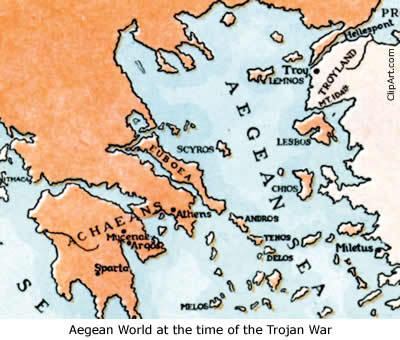Ancient Troy "The Ancient City of Troy deserves to become an addition to the museum."
Historical Meaning
Troy is associated with the Mycenean civilation, Greeks (Sparta) and the Romans.

Troy is a city that shows and displays some of the first contact between Anatolia and the Mediterranean world.
Troy shows and gives us more and valuable information about the ancient Greece and Rome and how it would shape the following events of these civilizations and leading us to evolve those respectable events. (conquering as an example)
Public Interest

The city of Troy influence and affect many people with its stories in Greek mythology and even the Romans who made the story an Roman Iliad
The city had influence on historical figures including Alexander the Great, Julius Caesar and Augustus and etc with recognition and stories like many other people. Some even considered to bring back Troy (instead that became Constantinople)
Conclusion
Ancient Troy provides us with historical, religious insight
and public interest during the Bronze Age to the Middle Ages. The secrets behind the ancient city, either in archeology or mythology, provide a sense of mystery and draws interest. History, religion and interest of Troy not goes with the past, but also impacts the world lived in today and continues to. Give us the best representation to understanding Greeks/Trojans and would provide vital elements in a museum.
Bibliography
Jarus, Owen, “Ancient Troy: The City & the Legend”
https://www.livescience.com/38191-ancient-troy.html
Cartwright, Mark, “Troy” https://www.ancient.eu/troy/
Martinez, Oscar, “How archaeologists found the lost city of Troy” https://www.nationalgeographic.com/history/magazine/2015/12/the-lost-city-of-troy/
Religious Value
Troy and the surrounding area had beliefs and variety of religions.
In mythology, religious views of both sides caused an eventual Trojan War leading to the fall of Troy by King Agamemnon
Connected religious beliefs from vague and variety into a single united religion
This religious value a vital part of Troy's past and why it fell (in mythology). Religion as a whole was a very influential part in Troy's history because of the stories' religious connection in them and how much of a role religion played in.
Troy in
Archeology

In the archeological view of Troy, excavations in the area
began in 1863, and continued on towards the 20th century.
This revealed nine hidden cities, which were labelled Troy I-IX.
Troy I - (3000-2550 BCE) a small village settlement surrounded by stone walls. Pottery and metal finds match those on Lesbos and Lemnos in the Aegean and in northern Anatolia.
Troy II - (2550-2300 BCE) displays larger buildings, mud-brick and stone fortifications with monumental gates. Materials found suggest there was trading occurring with Asia.
Troy III-V - (2300-1750 BCE) is the most difficult period to reconstruct as the layers were hastily removed in early excavations.
Troy VI - (1750-1300 BCE) is the period most visible today at the site and is the most likely candidate for the city of Homer’s Trojan War.
Troy VII - (1180-950 BCE) display an increase in the size of the lower town and some reconstruction of the fortifications but also a marked decline in architectural and artistic quality.
Troy VIII-IX - (950 BCE to 550 CE) are the sites of Greek Ilion and Roman Ilium respectively. Alexander the Great visited the site before his expedition in the opposite direction in order to conquer Asia, and Romans also held Troy in high regard. Overtime, the site declined being abandoned, and was not found for another 1500 years.
Troy in
Mythology

The popular story of Ancient Troy is that the city was attacked in the Trojan War. The war was a ten year siege by the coalition of Greek forces led by King Agamemnon.

The purpose was to reclaim Helen (King's brother) from the Trojan Price, Paris, because he claimed Helen as a prize for choosing Aphrodite (as the most beautiful goddess).

Being the setting for Homer's Iliad (he recounts the final year of the Trojan War), Homer describes the city as ‘well-founded’, ‘strong-built’ & ‘well-walled’ to survive the siege. Eventually, trickery using a large Trojan horse as the cover to sneak in caused the city of Troy to fall.
About Ancient
Troy

Ancient Troy (located in modern day Turkey) was a city that existed from the Early Bronze Age to days of the Byzantine Empire. It existed in both real life and mythology/legends. The site became a designated world heritage site in 1998.
